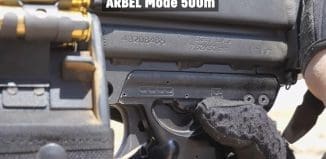Non-Lethal Device Against Vehicle-Born Attacks Under Development
This post is also available in:  עברית (Hebrew)
עברית (Hebrew)
Vehicle-born terrorist attacks, a terror technique that ISIS pioneered in Iraq and Syria in 2015 remain terrifyingly effective against unsuspecting urban populations. A new direct energy weapon may be able to stop this threat. The US Defense Department’s Joint Non-Lethal Weapons Program, or JNLWD, is pushing ahead with a new direct energy weapon that uses high-powered microwaves to stop cars in their tracks without damaging the vehicle, its driver, or anyone else.
According to defenseone.com, the jammer works by targeting the car’s engine control unit causing it to reboot over and over, stalling the engine. Like an invisible hand, the microwaves hold the car in place.
The US military is developing the weapon for “force protection” — as in protecting soldiers and bases. But it has applications for police as well. Placed strategically around cities, it could prevent attacks like the ones in Europe, Canada, the United States, and elsewhere.
The directorate hopes to have a working prototype by FY 2019.
The device has been developed in two versions. A small one, vaguely resembling an old-time phonograph, can fit in the bed of a truck. With a range of 50 meters, it is intended for hot pursuits. To deploy it, the driver would pull out in front of the attacker and turn it on.
For more random truck attacks, like the one in Toronto, the directorate is working on a stationary version about three times the size. If you could figure out the most likely locations for a vehicle-borne terrorist attack, you could pre-position the device.
The concept of the radio-frequency stopper reflects a breakthrough in shrinking power generators as in ray gun tech. Direct-energy weapons use a lot of power. Electricity to run the stopper comes from a gasoline-powered turbine from Candent Technologies that generates 300 kilowatts of power.






























